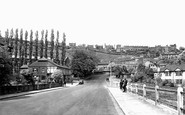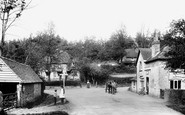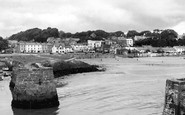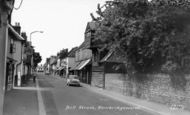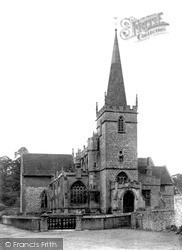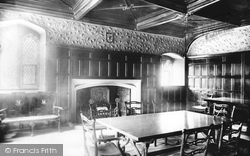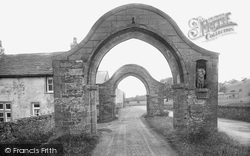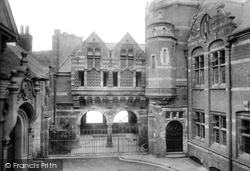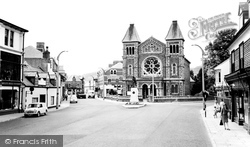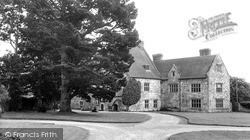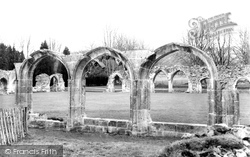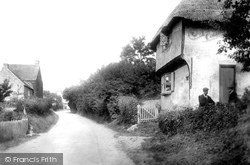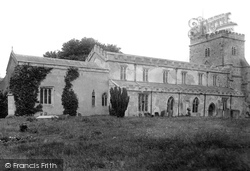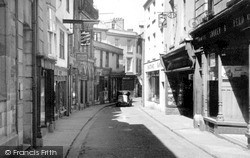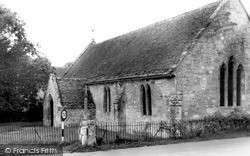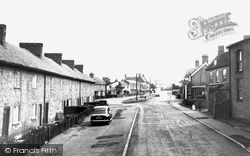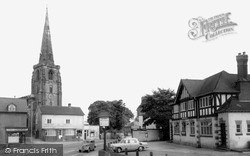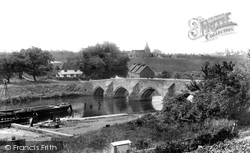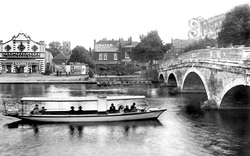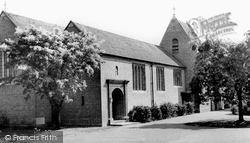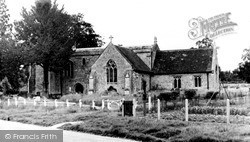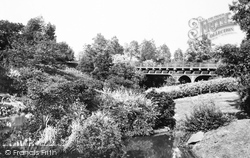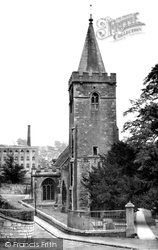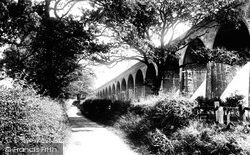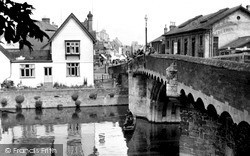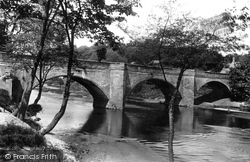Places
Sorry, no places were found that related to your search.
Photos
5 photos found. Showing results 521 to 5.
Maps
83 maps found.
Books
Sorry, no books were found that related to your search.
Memories
1,127 memories found. Showing results 261 to 270.
Langley Residential Special School 1956
Hi All, Just to say that I was a resident of Langley from January 1956 to July 1956. Have an autograph book here with staff and boys/girls comments on leaving - Staff: Afred/Margaret (Gardeners) D Barry ...Read more
A memory of Baildon by
Past Memories, Dagenham
Hi, born in 1941 and lived at 5 Downing Road. I attended Arnol Road School, then Gorsbrooke, would love to hear from old friends' Chris Case, Teddy Martin, Alf Cornell to name a few. Cannot remember to much. Mum and dad ...Read more
A memory of Dagenham by
Almost A Half Century In Old Ponteland
We moved to Ponteland in 1940 from North Shields in a bid to 'escape' the ever increasing air raids on Tyneside. We first lived on the North Road and I attended Coates Endowed School (headmaster, Mr Parker) ...Read more
A memory of Ponteland by
Bensham In The 40s
I was born in 1934 in Southill Rd, Bensham and went to Lady Vernon School, my name in them days was Sheila Lucas. I had a wonderful life in those days. My life revolved round Bensham, the baths in Mulgrave Terrace were ...Read more
A memory of Sheriff Hill by
Guinea Gap Baths
My memory is not so much as my own, but about what my grandfather told me. He says there was no such thing as swimming baths when he was young. Their swimming baths was the docks, if the 'cocky watchman' wasn't keeping an eye out ...Read more
A memory of Wallasey by
Threeways & Churt Post Office
To the left of the little girls in the photograph of Churt Post Office there is a large house that was called Threeways in the 50's and 60's, perhaps it was always called this, I do not know. After WWII my parents, Norman ...Read more
A memory of Churt by
Does Anyone Know?
I used to live in West Thurrock and go to Aveley School after West Thurrock Infants, I was in Thurrock for many years. What I want to know is can anyone remember what we used to call 'bug alley', most of my play days was ...Read more
A memory of West Thurrock by
Gift Shops In The Strand 1970s
I spent every Summer in Saundersfoot from the age of 6 to 15! My Uncle owned the garage at the bottom of the arches in Tenby, and I had great fun exploring. I am trying to remember the name of a lovely little gift ...Read more
A memory of Saundersfoot by
Rws
Hi, I went to RWS in 1957 but` was only there for two or three terms because I hated the place. My salvation was the friends I made there and the music teacher who was very kind, with whom I had piano lessons. Miss Edmed was the head ...Read more
A memory of Sawbridgeworth by
Happy Days
I lived in West Wickham from when I was born in 1956 until 1968. Remember the place very well. I went to Hawes Down school where Miss Washington was the headmistress. Always used to go to Kiddilines the toy shop at the bottom of the ...Read more
A memory of West Wickham by
Captions
1,233 captions found. Showing results 625 to 648.
Its arches to north, south and east are very tall too, and of Decorated style.
Today, the college is still a vibrant place of learning, and open to a much wider range of pupils than Humphrey Chetham ever dreamed of.
These arches can be seen when approaching Sawley (or 'Sally') Abbey. Built in about 1890, one of them had to be removed years later because it obstructed the highway.
The shot is seawards (centre), through the arches, from the Guildhall (left).
The Gothic-arched County Bridge straddles what was the old border between Yorkshire and the Palatinate of Durham.
Behind the mini-van on the left, the Butchers Arms had replaced a much older half- timbered building damaged extensively by fire in 1939.
The priory was dissolved by Henry VIII in 1537 and the church was demolished, but much of the priory was incorporated in the Tudor mansion we see in this view from near the gatehouse.
These ruined windows and arches are the remains of the cloisters. Situated in the north-west Cotswolds, Hailes Abbey was founded in 1246.
The 19th-century squire, Sir Edward Cholmeley Dering, had every window in the village altered to have rounded lights under an exterior arch in the belief that this would bring good luck.
Inside, the nave south arcade is partly late 12th-century and of high quality, and so are the rest of the nave arches, which are early 14th-century.
Internally, the church shows its Norman origins with two-bay arcades north and south and unmoulded arches separated by pieces of wall.
Opposite the arches and pillars of what used to be Hayman's Pianoforte Warehouse are just visible; the premises are now a gun shop.
The tiny nave and chancel have no arch; the plaster ceiling probably dates to the early 19th century. A bell from the time of the church's completion is kept on a window-sill.
right) is now a private house; the next building has been demolished, but Chequers House, in the foreground, has been restored, and today sports fine wrought iron railings and a splendid iron gate arch
The church is built of a grey sandstone; the scraping of the interior has left it somewhat dull, but relieved by the royal arms dated 1684 above the chancel arch.
This peaceful scene shows the 14th-century five-arched ragstone bridge, which is considered by some to be the finest in the south-east.
This view looks across the river to the south bank, now a much changed view. The Picturedome at this time was showing 'Madame Peacock' daily at 3, 7 and 9 o'clock.
Particularly pleasant is the Tuscan-columned interior, with its round arches under a wagon roof.
The nave is mainly 12th-century, while the 14th-century south chapel has an external arched tomb recess under its three-light window (centre).
The cast iron rustic bridge, built in 1870, has always been a much-photographed spot.
There are also memorials to Anne Long, 1601, in brass, and to Charles Steward, 1701: a standing figure (by Nost) is in front of a blank arch, with mourning putti left and right.
Here we have a grand view of the railway arches heading out of Whalley.
Apart from the need for something stronger, it was believed that the small arches restricted the flow of the Ouse and led to the formation of ice during the winter.
This sturdy bridge over the River Wharfe, linking Boston Spa with Thorp Arch, was built in 1770. Along the banks to the east is the old Spa Baths, now converted to housing.
Places (0)
Photos (5)
Memories (1127)
Books (0)
Maps (83)

